Abstract
1 The influence of a low protein diet (5% as compared with a control 21% protein diet) on the placental transfer of sodium salicylate was investigated in Sprague-Dawley rats on day 20 of gestation. 2 Maternal plasma salicylate concentrations (assayed by high pressure liquid chromatography) were generally lower in protein-deficient than in control animals at a wide range of times (0.25 - 12 h) and dose levels (2 - 250 mg/kg, i.v.); however, foetal plasma salicylate levels in the two groups of animals did not differ. 3 The placental transfer of salicylate as indicated by the ratio of foetal plasma or foetal liver to maternal plasma salicylic acid concentration was consistently and significantly greater in the protein-deficient group than in the control group of animals following the administration of the drug to the mother as well as to the foetus. 4 A decrease in calorie without a concomitant decrease in protein intake (pair-fed controls) did not alter the placental transfer of salicylate. 5 The increased placental transfer of salicylate in protein-deficient animals could not be attributed to changes in serum protein-salicylate binding. 6 It is suggested that the pharmacokinetic factors responsible for maintaining a lower level of salicylate in the foetus than in the mother are impaired by maternal malnutrition, and this may increase the foetal effects of maternally ingested salicylate.
Full text
PDF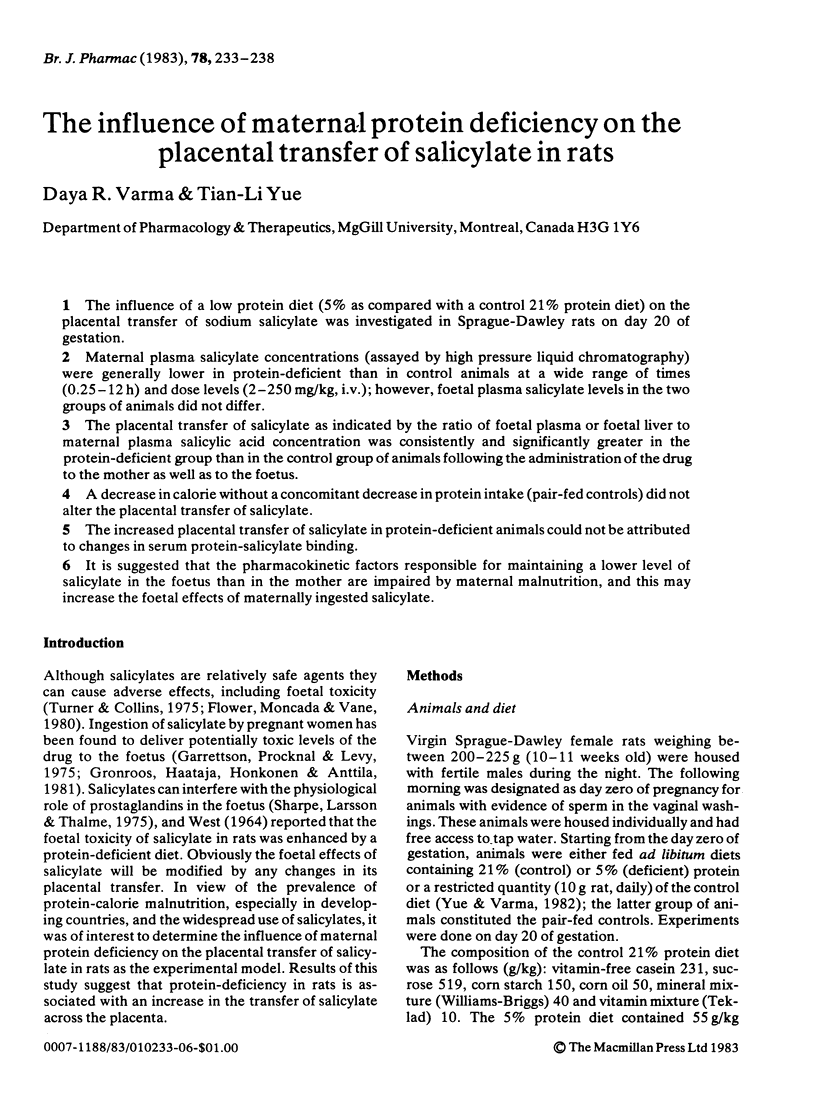
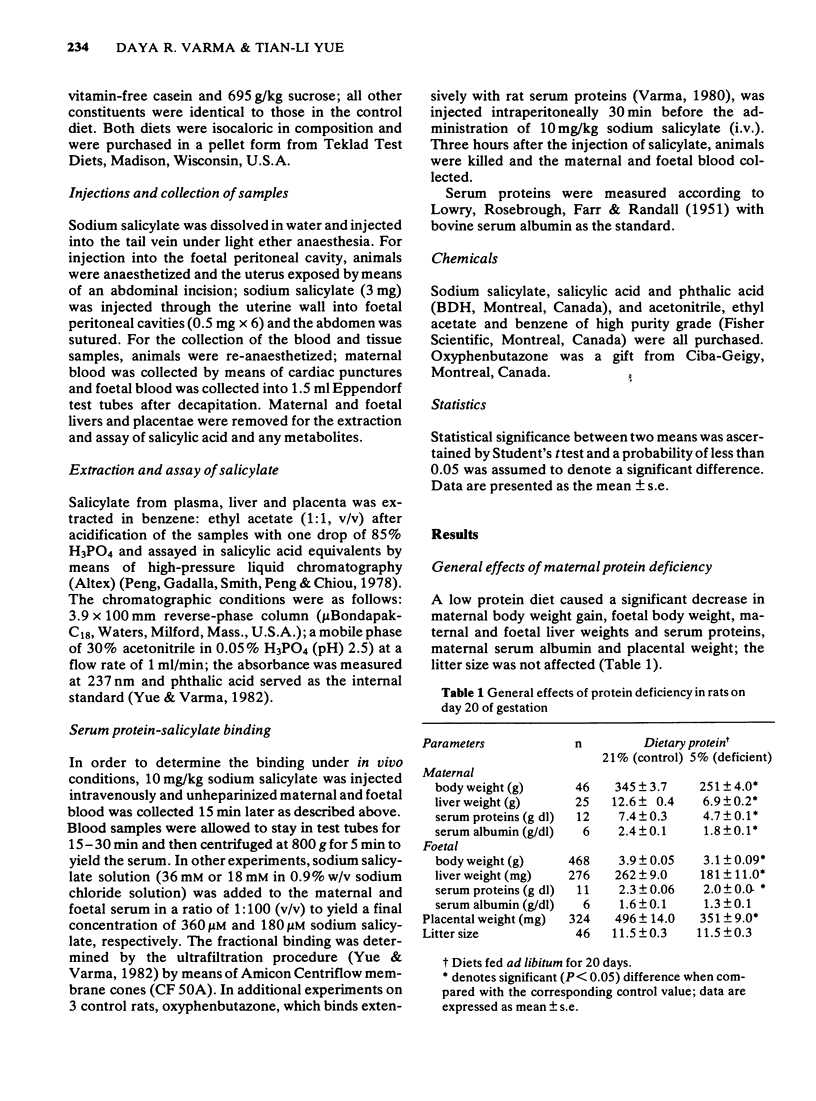
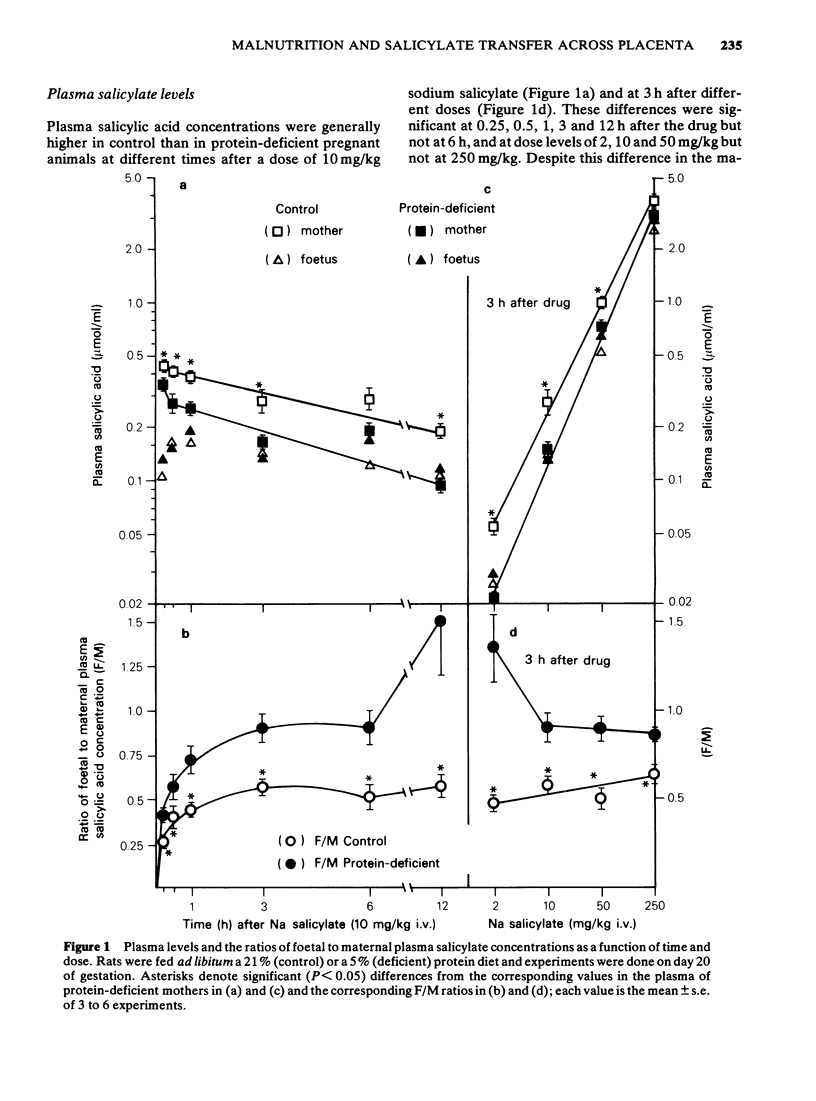
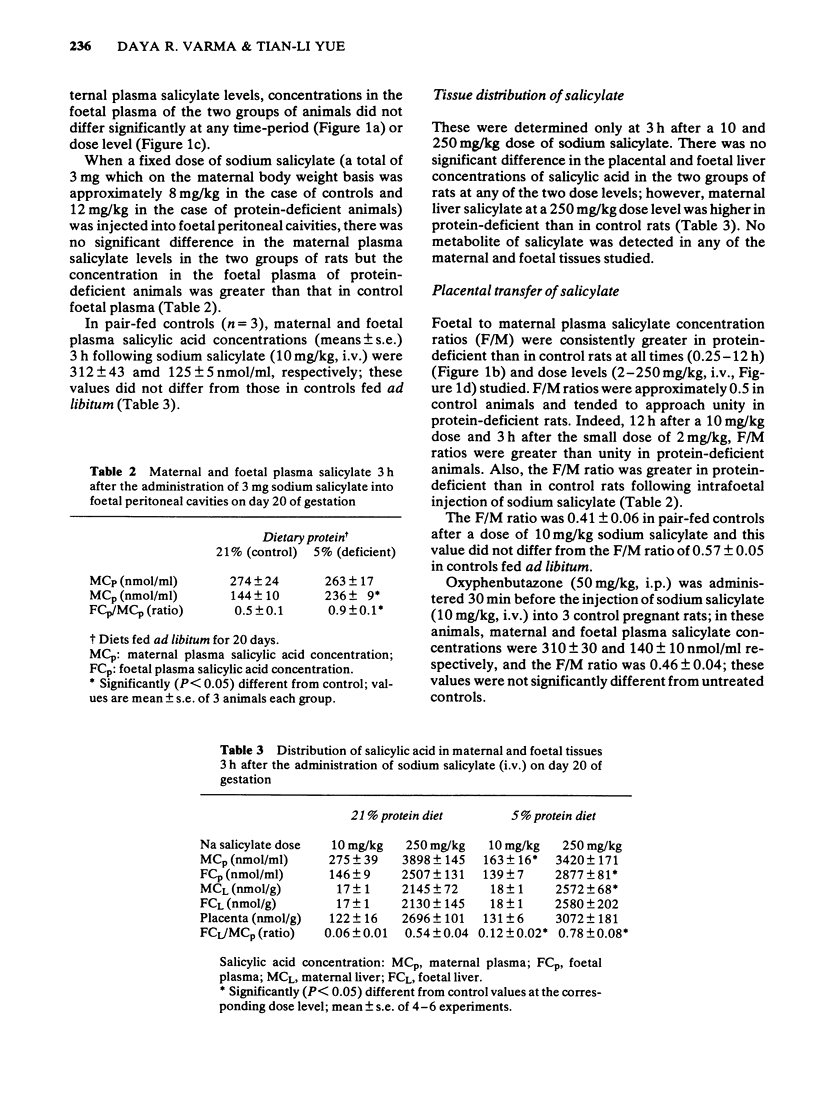
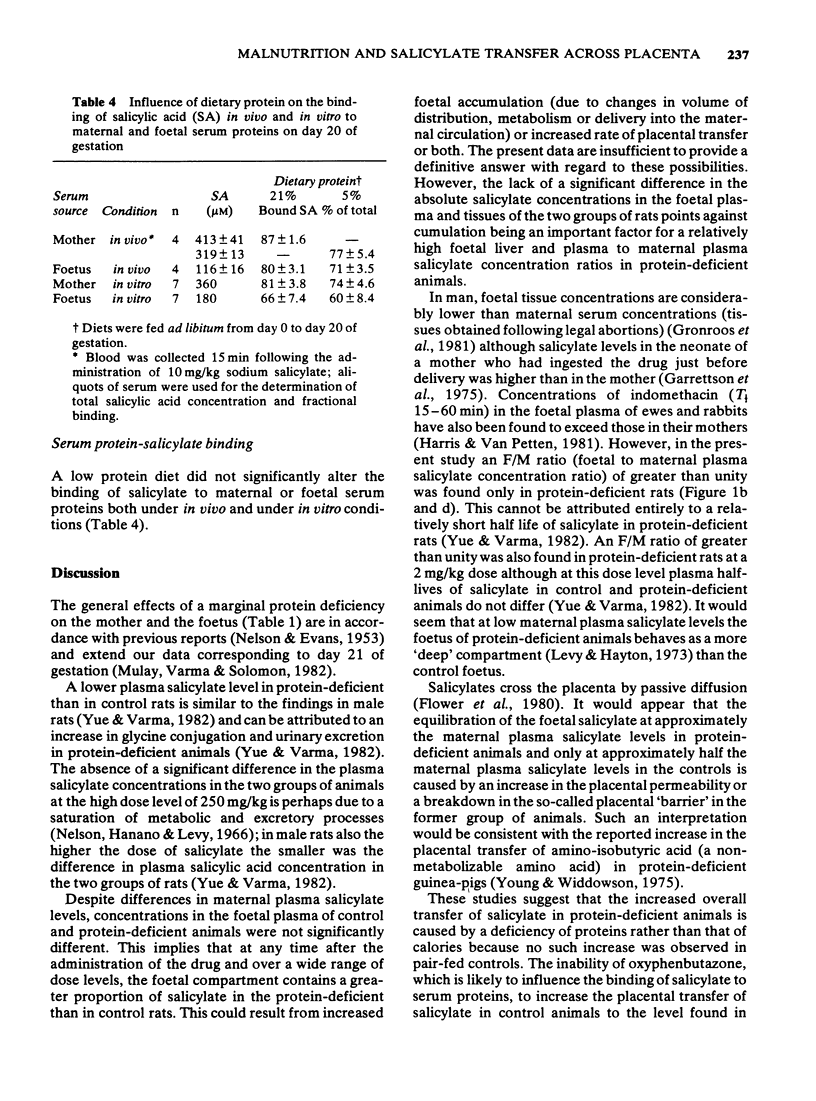
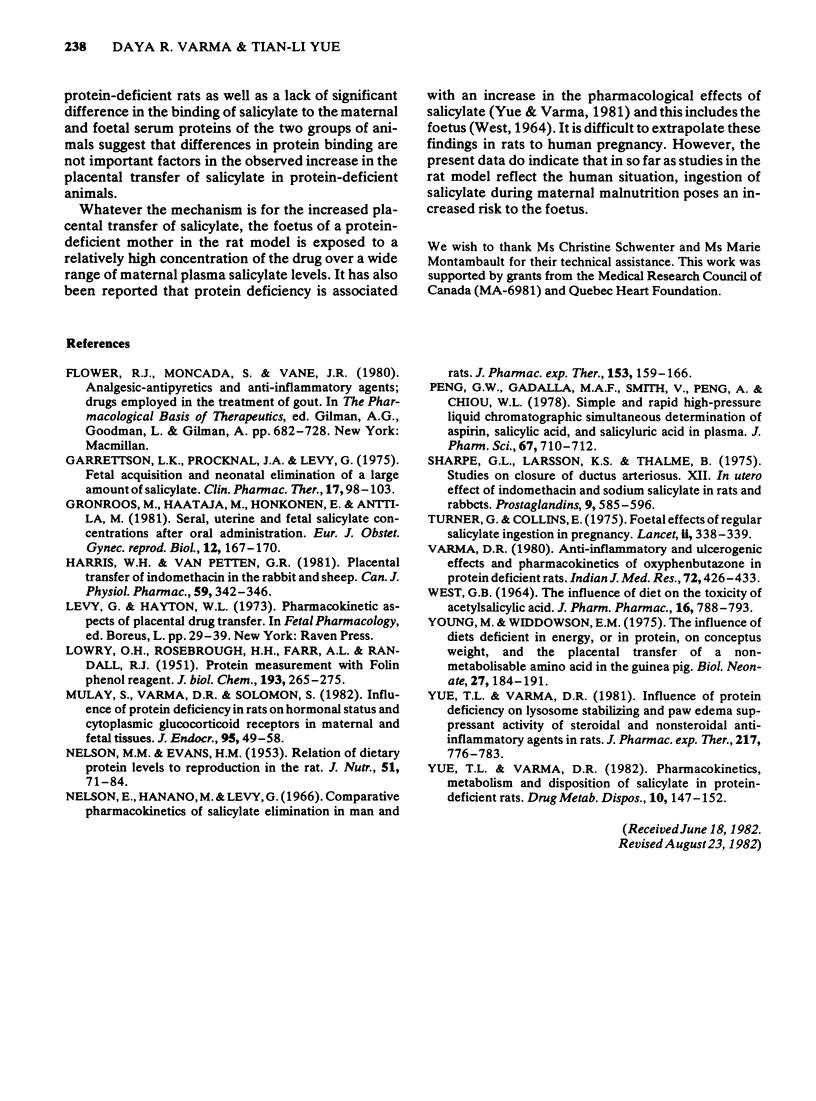
Selected References
These references are in PubMed. This may not be the complete list of references from this article.
- Garrettson L. K., Procknal J. A., Levy G. Fetal acquisition and neonatal elimination of a large amount of salicylate. Study of a neonate whose mother regularly took therapeutic doses of aspirin during pregnancy. Clin Pharmacol Ther. 1975 Jan;17(1):98–103. doi: 10.1002/cpt197517198. [DOI] [PubMed] [Google Scholar]
- Grönroos M., Haataja M., Honkonen E., Anttila M. Seral, uterine and fetal salicylate concentrations after oral administration. Eur J Obstet Gynecol Reprod Biol. 1981 Sep;12(3):167–170. doi: 10.1016/0028-2243(81)90072-1. [DOI] [PubMed] [Google Scholar]
- Harris W. H., Van Petten G. R. Placental transfer of indomethacin in the rabbit and sheep. Can J Physiol Pharmacol. 1981 Apr;59(4):342–346. doi: 10.1139/y81-053. [DOI] [PubMed] [Google Scholar]
- LOWRY O. H., ROSEBROUGH N. J., FARR A. L., RANDALL R. J. Protein measurement with the Folin phenol reagent. J Biol Chem. 1951 Nov;193(1):265–275. [PubMed] [Google Scholar]
- Mulay S., Varma D. R., Solomon S. Influence of protein deficiency in rats on hormonal status and cytoplasmic glucocorticoid receptors in maternal and fetal tissues. J Endocrinol. 1982 Oct;95(1):49–58. doi: 10.1677/joe.0.0950049. [DOI] [PubMed] [Google Scholar]
- NELSON M. M., EVANS H. M. Relation of dietary protein levels to reproduction in the rat. J Nutr. 1953 Sep;51(1):71–84. doi: 10.1093/jn/51.1.71. [DOI] [PubMed] [Google Scholar]
- Nelson E., Hanano M., Levy G. Comparative pharmacokinetics of salicylate elimination in man and rats. J Pharmacol Exp Ther. 1966 Jul;153(1):159–166. [PubMed] [Google Scholar]
- Peng G. W., Gadalla M. A., Smith V., Peng A., Chiou W. L. Simple and rapid high-pressure liquid chromatographic simultaneous determination of aspirin, salicylic acid, and salicyluric acid in plasma. J Pharm Sci. 1978 May;67(5):710–712. doi: 10.1002/jps.2600670540. [DOI] [PubMed] [Google Scholar]
- Sharpe G. L., Larsson K. S., Thalme B. Studies on closure of the ductus arteriosus. XII. In utero effect of indomethacin and sodium salicylate in rats and rabbits. Prostaglandins. 1975 Apr;9(4):585–596. doi: 10.1016/0090-6980(75)90064-7. [DOI] [PubMed] [Google Scholar]
- Turner G., Collins E. Fetal effects of regular salicylate ingestion in pregnancy. Lancet. 1975 Aug 23;2(7930):338–339. doi: 10.1016/s0140-6736(75)92778-6. [DOI] [PubMed] [Google Scholar]
- Varma D. R. Anti-inflammatory and ulcerogenic effects and pharmacokinetics of oxyphenbutazone in protein deficient rats. Indian J Med Res. 1980 Sep;72:426–433. [PubMed] [Google Scholar]
- WEST G. B. THE INFLUENCE OF DIET ON THE TOXICITY OF ACETYLSALICYLIC ACID. J Pharm Pharmacol. 1964 Dec;16:788–793. doi: 10.1111/j.2042-7158.1964.tb07411.x. [DOI] [PubMed] [Google Scholar]
- Young M., Widdowson E. M. The influence of diets deficient in energy, or in protein, on conceptus weight, and the placental transfer of a non-metabolisable amino acid in the guinea pig. Biol Neonate. 1975;27(3-4):184–191. doi: 10.1159/000240775. [DOI] [PubMed] [Google Scholar]
- Yue T. L., Varma D. R. Influence of protein deficiency of lysosome stabilizing and paw edema suppressant activity of steroidal and nonsteroidal anti-inflammatory agents in rats. J Pharmacol Exp Ther. 1981 Jun;217(3):776–783. [PubMed] [Google Scholar]
- Yue T. L., Varma D. R. Pharmacokinetics, metabolism and disposition of salicylate in protein-deficient rats. Drug Metab Dispos. 1982 Mar-Apr;10(2):147–152. [PubMed] [Google Scholar]


